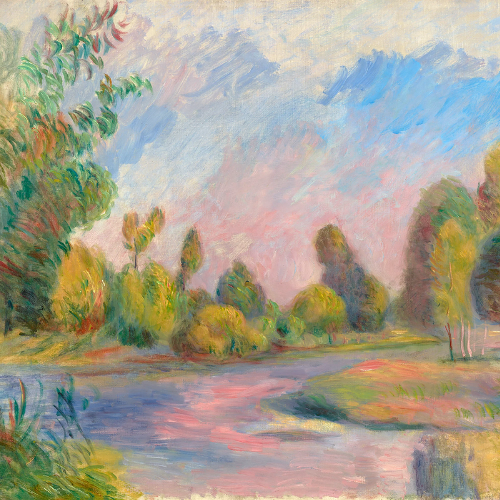French Naturalist painter Émile Friant's technical precision and observational prowess made his work some of the most desirable works of the early 20th century. He was a native of Nancy, a northeastern French city that in the later years of the 19th century was becoming a secondary artistic center to Paris. Displaying an immense talent for painting at a young age, Friant debuted at only fifteen years old at the Nanceienne Salon des Amis des Arts exhibition, an event which both proved his talent and earned him great notoriety. A year later, Friant traveled to Paris to study in the atelier of the famed academic painter Alexandre Cabanel but soon after returned to Nancy to continue working and exhibiting there. By that time, the artist had already become one of the most sought-after portraitists, fulfilling commissions for patrons such as artist Georges Jeanniot and sculptor Ernest Bussière. By 1881, however, Friant returned to Paris and rejoined Cabanel's studio, while continuing to fulfill his growing list of commissions.
In 1885, he received a travel scholarship which allowed him to visit the Netherlands, Italy, Malta and Tunisia. It was during this trip that Friant became influenced by the technique of the great Dutch Masters, as evidenced by the current offering,
The Familiar Birds. Their concentration upon everyday subjects and treatment of light and perspective are clearly demonstrated in this portrait. Despite the obvious qualities that would assumedly draw attention, it is the subject's warm smile and bright eyes that truly captivate the viewer's focus. Her casual pose and expressive face is reminiscent of the works of Dutch portraitist Frans Hals, as showcased in his work entitled
Willem Heythuijsen (1634).
Friant's successes grew throughout the remainder of his career, adding American patrons such as Henry Clay Frick to his list of distinguished clientele. He continued to exhibit his work to a global audience at the international exhibitions, including the Paris Salon. He became a professor of drawing at the
Ecole Nationale des Beaux-Arts in 1906 and was awarded the rank of Commander of the
Legion d'Honneur in 1931.







